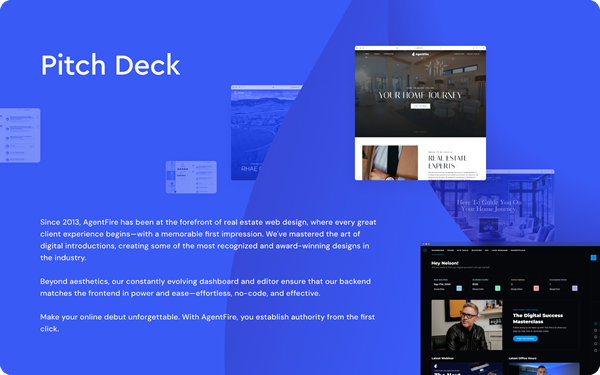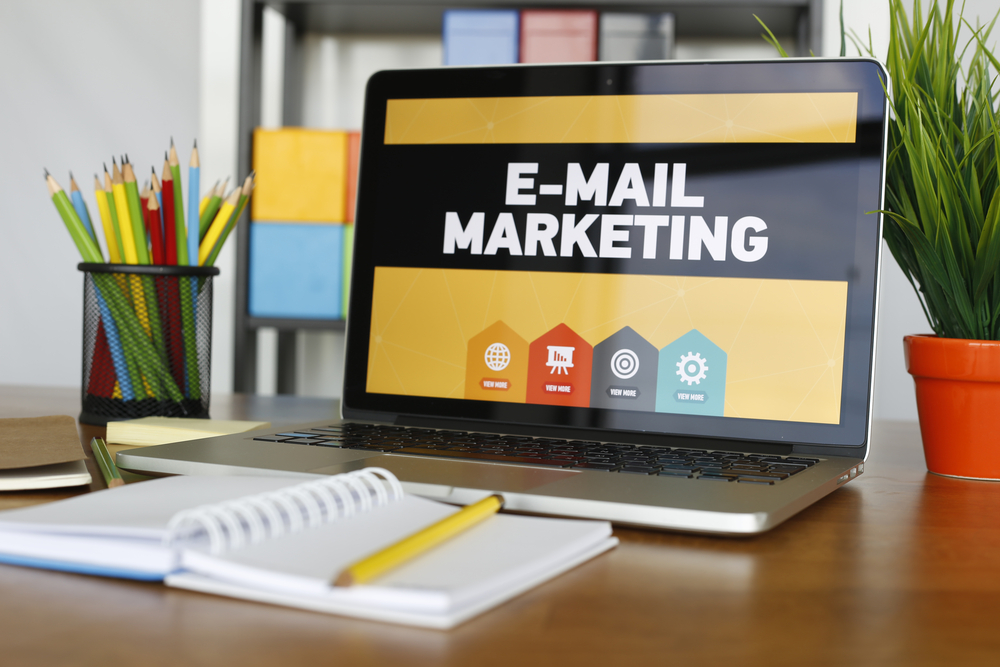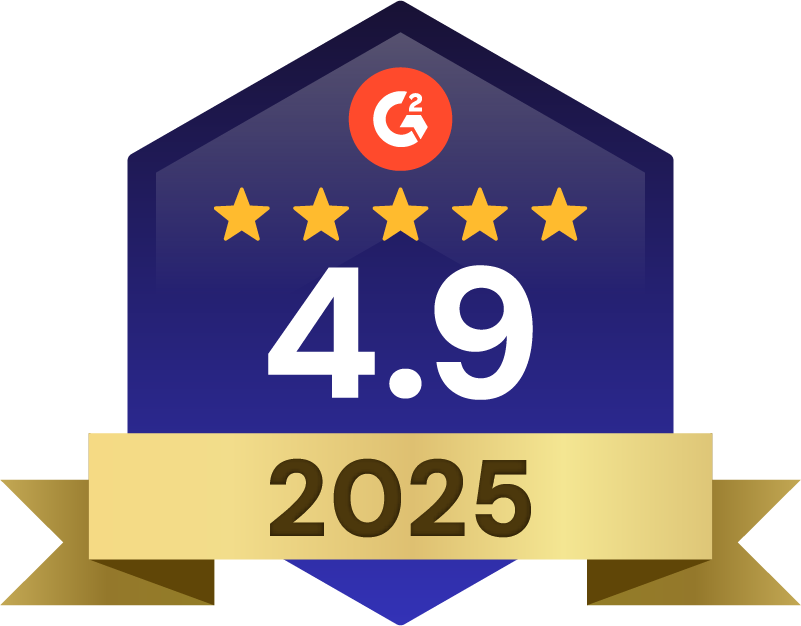Real estate email subscribers are unsubscribing due to poor content, frequency, or mobile issues. Learn how to fix it and keep your list engaged.
Branding & Design Email Marketing
When real estate email subscribers leave your list, it can be frustrating. Understanding why it happens is the first step toward improving your email marketing strategy.
This article explains the most common reasons people unsubscribe from real estate email lists. It also provides simple strategies to address each issue using current best practices and industry insight.
Why Real Estate Email Subscribers Unsubscribe

A healthy unsubscribe rate for real estate email campaigns typically falls between 1% and 2%. This range reflects normal list activity and allows for natural list maintenance. However, higher rates signal problems with your email approach.
Not every unsubscribe is bad news. Some unsubscribes actually help clean your list by removing contacts who aren’t interested or engaged. This natural filtering improves your long-term deliverability and engagement metrics.
The top reasons real estate subscribers hit that unsubscribe button include:
- Too many emails: Bombarding inboxes leads to subscriber fatigue and quick opt-outs
- Irrelevant content: Generic messages that don’t address specific needs or interests
- Poor mobile experience: Emails that display poorly on smartphones
- No clear value: Content that doesn’t help subscribers with their real estate journey
- Subscription confusion: Recipients who don’t remember signing up for your list
Breaking any of these trust factors can damage your relationship with potential clients and lead to lost opportunities.
Find the Right Email Frequency for Real Estate
Sending too many emails is the #1 reason people unsubscribe from real estate lists. Most successful real estate professionals find that 2-4 emails per month hits the sweet spot for engagement without overwhelming subscribers.
Different subscriber groups have different tolerance levels for email frequency:
| Subscriber Type | Ideal Frequency | Why It Works |
| Active buyers | Weekly | They want regular updates on new listings and market changes |
| Past clients | Monthly | Keeps you top-of-mind without being intrusive |
| Cold leads | Bi-weekly | Provides value without overwhelming those still deciding |
The best approach? Let subscribers choose. Adding a simple frequency preference option during sign-up or in your email footer gives readers control and reduces opt-outs.
Remember that consistency matters more than volume. A predictable schedule helps subscribers know what to expect, whether it’s your “Market Monday” update or your “Weekend Open House Guide.”
Personalize to Keep Real Estate Subscribers Engaged
Generic, one-size-fits-all emails are a fast track to unsubscribes. Today’s real estate clients expect content that speaks directly to their specific situation.
Segment Your List by Location
Breaking down your email list by neighborhoods, zip codes, or school districts lets you send relevant hyperlocal content to each group.
For example, someone interested in downtown condos doesn’t care about suburban school district updates. But they might love hearing about the new coffee shop opening near a listing you have.
Personalize Your Subject Lines
Emails with personalized subject lines pique subscribers’ interest more often than generic ones. Try these proven approaches:
- “New listings in [Neighborhood] under [Price Point]”
- “[First Name], here’s what sold on your street last month”
- “Market update for [Zip Code]: Prices up 5% since you asked”
The goal is relevance, not trickery. Avoid clickbait tactics that promise more than your email delivers.
Match Content to Each Client’s Journey
A first-time homebuyer has completely different needs than an empty-nester looking to downsize. Your emails should reflect where each subscriber stands in their real estate journey.
Simple ways to track and respond to subscriber stages:
- Monitor which listing pages they visit on your website
- Note which links they click in previous emails
- Use form data from downloads or inquiries
- Track how long they’ve been on your list
This information helps you send the right content at the right time, keeping subscribers engaged instead of hitting unsubscribe.
Prevent Unsubscribes with Mobile-Friendly Design
When subscribers can’t easily read your emails on their phones, they’re quick to unsubscribe. With most real estate emails now opened on mobile devices, proper formatting is essential.
Create Responsive Email Templates
Responsive emails automatically adjust to fit whatever screen size they’re viewed on. This means no pinching, zooming, or horizontal scrolling required.
Key elements of mobile-friendly real estate emails:
- Single-column layouts (multiple columns break on small screens)
- Large, easy-to-tap buttons (minimum 44×44 pixels)
- Readable font sizes (14px minimum)
- Compressed images that load quickly on mobile data
AgentFire’s email templates are built with mobile users in mind, ensuring your messages look great on every device.
Test Before You Send
Before hitting send on your next listing alert or market update, preview how it will look across different devices and email clients.
Free tools like Litmus and Email on Acid let you see exactly how your email will appear in Gmail, Outlook, Apple Mail, and on various smartphones.
A quick pre-send checklist:
- Are all images displaying properly?
- Can you read all text without zooming?
- Do all buttons and links work correctly?
- Does the email load quickly?
Taking five minutes to test can prevent hundreds of unsubscribes from frustrated mobile users.
Clean Your Real Estate Email List Regularly
Email list hygiene directly impacts your delivery rates and engagement metrics. Regular cleaning helps your messages reach interested subscribers and reduces the chance of being flagged as spam.
Remove Inactive Contacts
Subscribers who haven’t opened or clicked your emails in six months are unlikely to suddenly re-engage. These inactive contacts:
- Drag down your open rates
- Make your analytics less accurate
- Can hurt your sender reputation with email providers
Before removing inactive subscribers, try a re-engagement campaign. Send a simple “Do you still want to hear from us?” email. Those who don’t respond after 1-2 follow-ups can be safely removed.
Verify Email Addresses
Invalid email addresses cause bounces, which damage your sender reputation and can get your account flagged by email providers.
Basic verification checks:
- Correct email format ([email protected])
- Active mail server
- No spam traps or known bad addresses
Email verification tools like NeverBounce or ZeroBounce can automatically clean your list of problematic addresses before they cause deliverability issues.
Quick tip: Clean your email list quarterly to maintain high engagement rates and keep your real estate messages reaching the right inboxes.

Follow Legal Requirements for Real Estate Email Unsubscribes
Email marketing for real estate professionals must comply with specific laws designed to protect consumers. Understanding these requirements helps you avoid penalties while building trust with your audience.
CAN-SPAM Act Basics
The CAN-SPAM Act applies to all commercial emails, including real estate marketing messages. Key requirements include:
- Identifying the message as an advertisement
- Including your physical office address
- Providing a clear way to opt out of future emails
- Honoring unsubscribe requests within 10 business days
Penalties for violations can reach $51,744 per email, making compliance both a legal necessity and good business practice.
Creating Effective Unsubscribe Options
Every marketing email needs an unsubscribe link that’s easy to find and use. Typically placed in the footer, this link should use clear language like “Unsubscribe” or “Update your email preferences.”
Consider offering a preference center instead of just an all-or-nothing unsubscribe option. This gives subscribers choices like:
- Receiving fewer emails
- Changing content preferences (listings only, market updates only, etc.)
- Pausing emails temporarily
Many subscribers who might otherwise leave completely will choose to adjust their preferences instead, helping you maintain a larger, more engaged list.
Simple Strategies to Keep Real Estate Subscribers Engaged
Implementing a few key practices can dramatically reduce unsubscribe rates and improve overall engagement with your real estate email campaigns.
Welcome New Subscribers Properly
The first email you send sets the tone for your entire relationship. A proper welcome sequence:
- Confirms subscription and thanks the subscriber
- Explains what types of content they’ll receive
- Sets clear expectations about email frequency
- Invites interaction (reply, follow on social, etc.)
When subscribers know what to expect from the beginning, they’re less likely to be surprised or annoyed by future emails.
Offer Valuable Local Content
Generic real estate content doesn’t cut it anymore. Your subscribers want hyperlocal insights they can’t get anywhere else.
High-value content types that reduce unsubscribes:
- Neighborhood market reports with recent sales and price trends
- Local development news that affects property values
- School district updates and ratings changes
- Community events and local business openings
AgentFire’s platform makes it easy to create and distribute this hyperlocal content through integrated tools that connect your website, CRM, and email marketing systems.
Learn from Unsubscribe Data
When someone leaves your list, they’re giving you valuable feedback. Smart real estate professionals use this data to improve their email strategy.
Add a quick, optional survey to your unsubscribe page asking why they’re leaving. Common options include:
- Too many emails
- Content not relevant
- Don’t remember subscribing
- Found another agent
- No longer in the market
Track these responses over time to identify patterns. If “too many emails” consistently tops the list, it’s time to reduce frequency. If “content not relevant” is common, review your segmentation strategy.
Also track when unsubscribes happen. Do they spike after certain types of emails? Are they higher on particular days of the week? These patterns reveal what’s working and what isn’t.
Build Trust with Your Real Estate Email List
Trust is the foundation of successful real estate email marketing. When subscribers trust you, they open your emails, engage with your content, and eventually become clients.
Build trust through transparency:
- Clearly explain how you got their email address
- Deliver what you promised during sign-up
- Be consistent with your sending schedule
- Provide genuine value before asking for anything
- Honor preferences and unsubscribe requests promptly
These practices reflect positively on your real estate brand and help convert subscribers into clients and referral sources.
Your Next Step with AgentFire
Unsubscribes happen, but they don’t have to derail your real estate email marketing. By understanding why subscribers leave and implementing the strategies we’ve covered, you can build a more engaged list that generates leads and referrals.
AgentFire’s platform integrates email marketing with your real estate website and CRM, making it easier to segment your audience, deliver personalized content, and track engagement. Our mobile-optimized templates and hyperlocal content tools address the main reasons subscribers unsubscribe.
Ready to reduce unsubscribes and boost engagement? Book a Demo to see how AgentFire can transform your real estate email marketing.
FAQs About Real Estate Email Marketing
What is a normal unsubscribe rate for real estate email marketing?
A healthy unsubscribe rate falls between 1-2% per email campaign, with anything consistently higher indicating potential problems with your content or frequency.
How can I recover real estate subscribers who have already unsubscribed?
Once someone unsubscribes, focus on connecting through other channels like social media or direct mail rather than attempting to re-add them to your email list without permission.
What types of email content keep real estate subscribers engaged?
Hyperlocal content like neighborhood market reports, local development news, community events, and targeted listing alerts based on subscriber preferences consistently shows the highest engagement.
How do I create mobile-friendly real estate emails?
Use single-column layouts, large tap-friendly buttons, readable fonts (14px minimum), and compressed images that load quickly on mobile devices.
How often should I send emails to my real estate prospects?
Most real estate professionals find 2-4 emails per month is optimal for general subscribers, though active buyers may appreciate weekly updates while past clients may prefer monthly check-ins.







